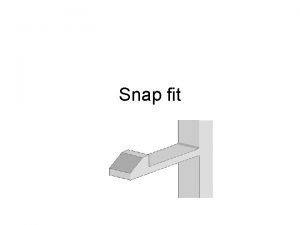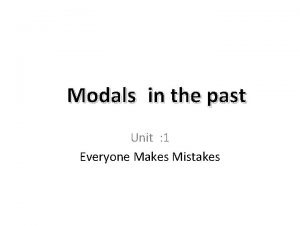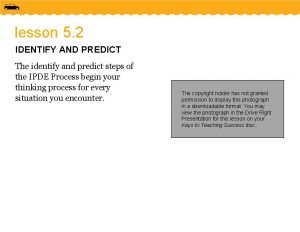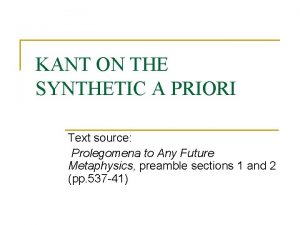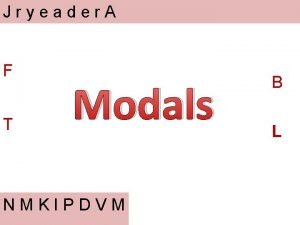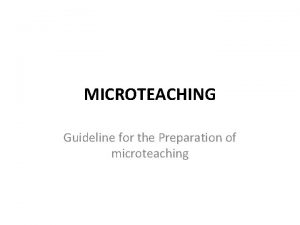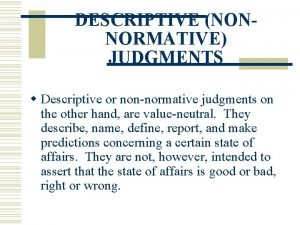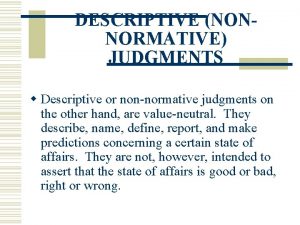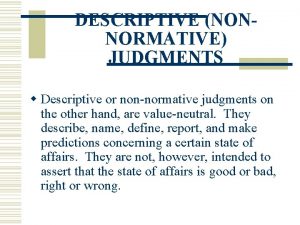PPD 11 th January 2017 Microteaching Snap judgments






- Slides: 6

PPD – 11 th January, 2017 Micro-teaching “Snap judgments are, first of all, enormously quick: they rely on the thinnest slices of experience, but they are also unconscious”. Malcolm Gladwell, Blink: The Power of Thinking Without Thinking

Marginal gains – Sir Dave Brailsford’s approach “You can achieve optimal performance by the aggregation of marginal gains. It means finding a 1% margin for improvement in everything you do. “ How could this Image apply to. Box teaching? ? How can we make marginal gains?

Why Micro Teaching? Blink – snap decisions Teacher credibility In 2010, Ambady and Rosenthal conducted and published a piece of research entitled, “Thin slices in human judgement and student perception of teachers”. This showed that students form clear judgements about their teachers within 10 seconds of meeting them (the thin slice phenomenon). Students form these judgements by watching our gestures, facial expressions, and body Image Box movements, and may do so even before we speak. As part of the study, students also watched brief video films of teachers they did not know and these students’ opinions correlated with the ratings made by the same teachers’ own students with regards to their effectiveness as teachers.

Why Micro Teaching? Micro-teaching is a teacher training and faculty development technique whereby the teacher reviews a recording of a teaching session, in order to get constructive feedback from peers about what has worked and what improvements can be made to teaching technique. It enables us to reflect on how we are perceived in the classroom. How do we stand? Do we stay in the same spot? Do we pause before accepting to answers to questions? Do we ignore certain parts of the classroom? Image Box Take-away reading: Read John Tomsett’s experience of using micro-teaching to improve his own teaching on a micro level. Hattie ranks micro-teaching as 6 th on his influences on student achievement.

The process 1. Look at the micro-teaching reflection form to get an overview of the process 2. Watch this short clip of Mr Wayth’s Y 7 Spanish class (please excuse the film work) 3. Finally, watch this coaching clip Image Box ‘Every teacher needs to improve, not because they are not good enough, but because they can be even better. ’ Dylan Wiliam

The process 1. Borrow the i. Pad, stand swivl robot from JWH. 2. Tell your class what you’re doing and explain it will track you (to avoid distractions during lesson). 3. You can start the recording remotely. 4. Upload the video to Swivl from the i. Pad. 5. Visit http: //cloud. swivl. com/login Image Box User: jwayth@highcliffeschool. com / password: Highcliffe 123 6. You can then edit video and export it (delete it from ipad and cloud) ‘Every teacher needs to improve, not because they are not good enough, but because they can be even better. ’ Dylan Wiliam
